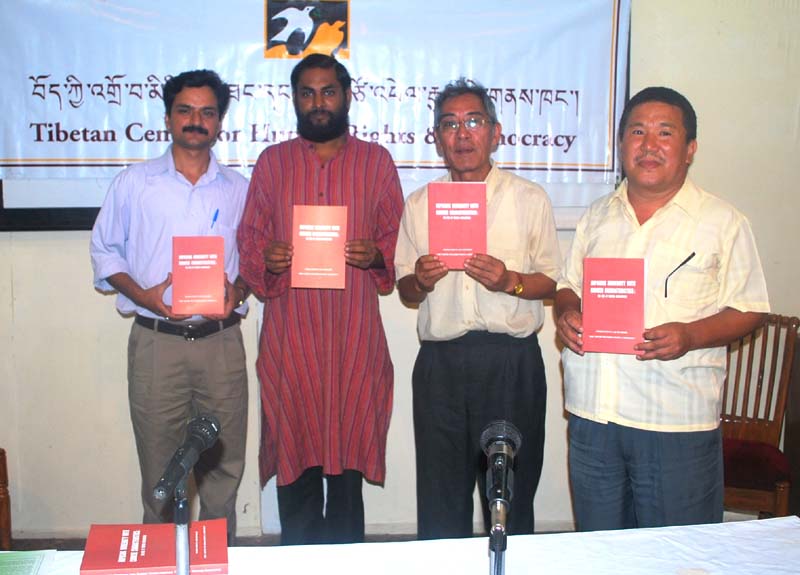 Dharamshala: - Thupten Samphel, the secretary of the Department of Information and International Relations, members of the Director for the Tibetan Center of Human Rights and Democracy, and Anant Ashthana of the Delhi office of the Human Rights Law Network introduced their new book this morning (4th July). For "Imposing Modernity with Chinese Characteristics: The Fate of Tibetan Civilization," researchers conducted countless interviews with Tibetan refugees in order to examine the current cultural situation in Tibet.
Dharamshala: - Thupten Samphel, the secretary of the Department of Information and International Relations, members of the Director for the Tibetan Center of Human Rights and Democracy, and Anant Ashthana of the Delhi office of the Human Rights Law Network introduced their new book this morning (4th July). For "Imposing Modernity with Chinese Characteristics: The Fate of Tibetan Civilization," researchers conducted countless interviews with Tibetan refugees in order to examine the current cultural situation in Tibet.
Through using many direct quotes from Tibetan refugees, "Imposing Modernity" seeks to express the perceptions and opinions of the Tibetan people. Through research, study, and interviews, the book seeks to investigate why there is such opposition to development in the Tibetan region and why many Tibetans refuse to stay in China.
It concludes that "cultural genocide," defined as a system "whose purpose is to destroy, in whole or in part, a people's culture through various different procedures," is taking place. According to the authors, Chinese development in Tibet "has a definite strategy and scheme aimed at disassociating the Tibetan population from its identity, value spectrum, history and other cultural affiliations like language and literature."
"Imposing Modernity" examines the various ways in which cultural genocide has occurred in Tibet. The first is the 'development' of Tibet. The authors claim that China seeks to completely assimilate Han Chinese into Tibetan culture by encouraging mass immigration and displacing local populations. They also claim that part of this assimilation is designed in order to exploit Tibet's natural resources through industrial mining and large-scale timber operations.
The authors also claim that certain values intrinsic to Tibetan society have been taken out of education in Tibet, such as the Buddhist ideas of developing the heart and purifying the mind.
The decline of the Tibetan language, with Chinese as the predominant language of instruction in schools, business, and, increasingly, general communication, is cited as another example of cultural genocide.
Examples related to religion and culture are also given; 90% of Tibet's monasteries have been destroyed, and Tibetans have been forces to "publicly denounce high religious leaders" and attend study sessions about Chinese communism. Tibetans have even been forced to go against the Buddhist teaching of not harming any living thing by forcibly fulfilling quotas of killing certain numbers of flies and dogs.
"Imposing Modernity" ends with an appeal to the international community regarding Tibet's development. The authors state that while sustainable development can ultimately benefit Tibet, Tibetans must be involved in the planning of projects, and be allowed to keep their own culture and customs alive. "They must, in short, be allowed a voice in determining their own future."


![Tibet has a rich history as a sovereign nation until the 1950s when it was invaded by China. [Photo: File]](/images/stories/Pics-2024/March/Tibet-Nation-1940s.jpg#joomlaImage://local-images/stories/Pics-2024/March/Tibet-Nation-1940s.jpg?width=1489&height=878)















